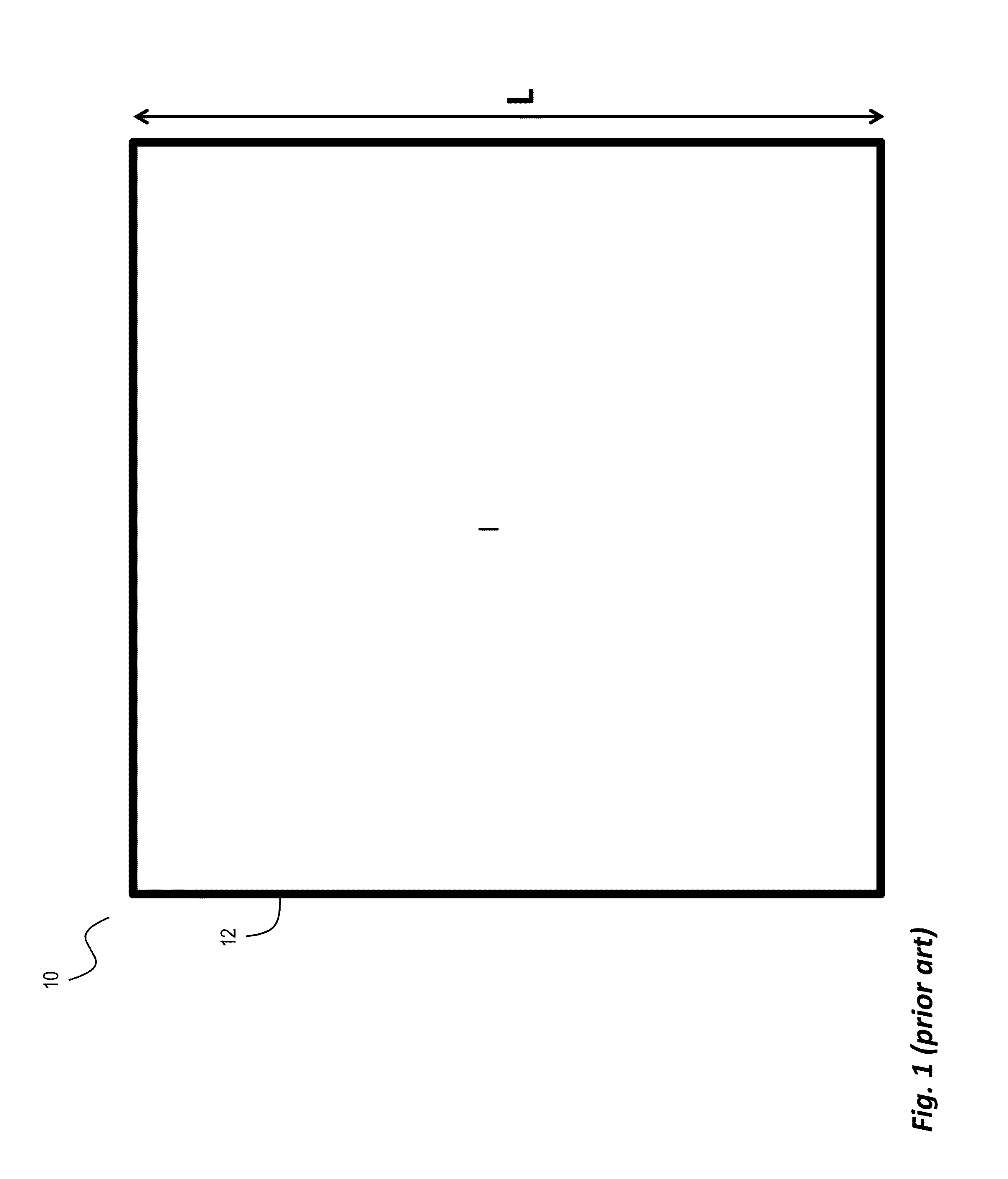Fabrication methods for monolithically isled back contact back junction solar cells
- Summary
- Abstract
- Description
- Claims
- Application Information
AI Technical Summary
Benefits of technology
Problems solved by technology
Method used
Image
Examples
third embodiment
[0369]In one embodiment the segments / isles are first formed with a pulsed laser isolation trench either fully through the complete absorber layer or partially through the absorber layer (for instance a trench depth suitable such that a subsequent absorber layer removal / thinning by etching and texturing etches far enough to effectively and reproducibly form the trench-isolated sub-cells / isles. In yet another embodiment, the absorber layer (e.g. the silicon wafer) is first thinned to its final thickness (plus the silicon that is to be textured later), then segmented either fully through the remaining thinned absorber layer or almost completely such that the subsequent texturing process is sufficient to separate the individual sub-cells or isles. A third embodiment utilizes a combination between the two above sequences where in a first step most of the thinning etch is performed, followed by complete or almost complete trench-isolated segmentation, followed by further etching and sunny...
fourth embodiment
[0370]In a fourth embodiment, the isolation cut is performed after thinning and texturing are both completed. This embodiment may include two additional options. In one option, after the segmentation cut the wafer surface goes directly into passivation. This has the advantage of reducing the overall number of wet process steps. Another option is perform a slight cleanup step to remove debris and potential damage from the laser step. Such cleanup steps may consist of a short immersion in an alkaline chemistry such as the texture chemistry itself, followed by suitable post texture clean, or by mild debris removals such as megasonic cleans.
[0371]It is important to note that the trench isolation segmentation process itself should leave the backplane material relatively intact to retain structural integrity of the cell such that the cell sandwich may be processed using a typical cell form factor, such as 156 mm×156 mm square or pseudo square with the respective automated equipment that c...
PUM
 Login to View More
Login to View More Abstract
Description
Claims
Application Information
 Login to View More
Login to View More - R&D
- Intellectual Property
- Life Sciences
- Materials
- Tech Scout
- Unparalleled Data Quality
- Higher Quality Content
- 60% Fewer Hallucinations
Browse by: Latest US Patents, China's latest patents, Technical Efficacy Thesaurus, Application Domain, Technology Topic, Popular Technical Reports.
© 2025 PatSnap. All rights reserved.Legal|Privacy policy|Modern Slavery Act Transparency Statement|Sitemap|About US| Contact US: help@patsnap.com



